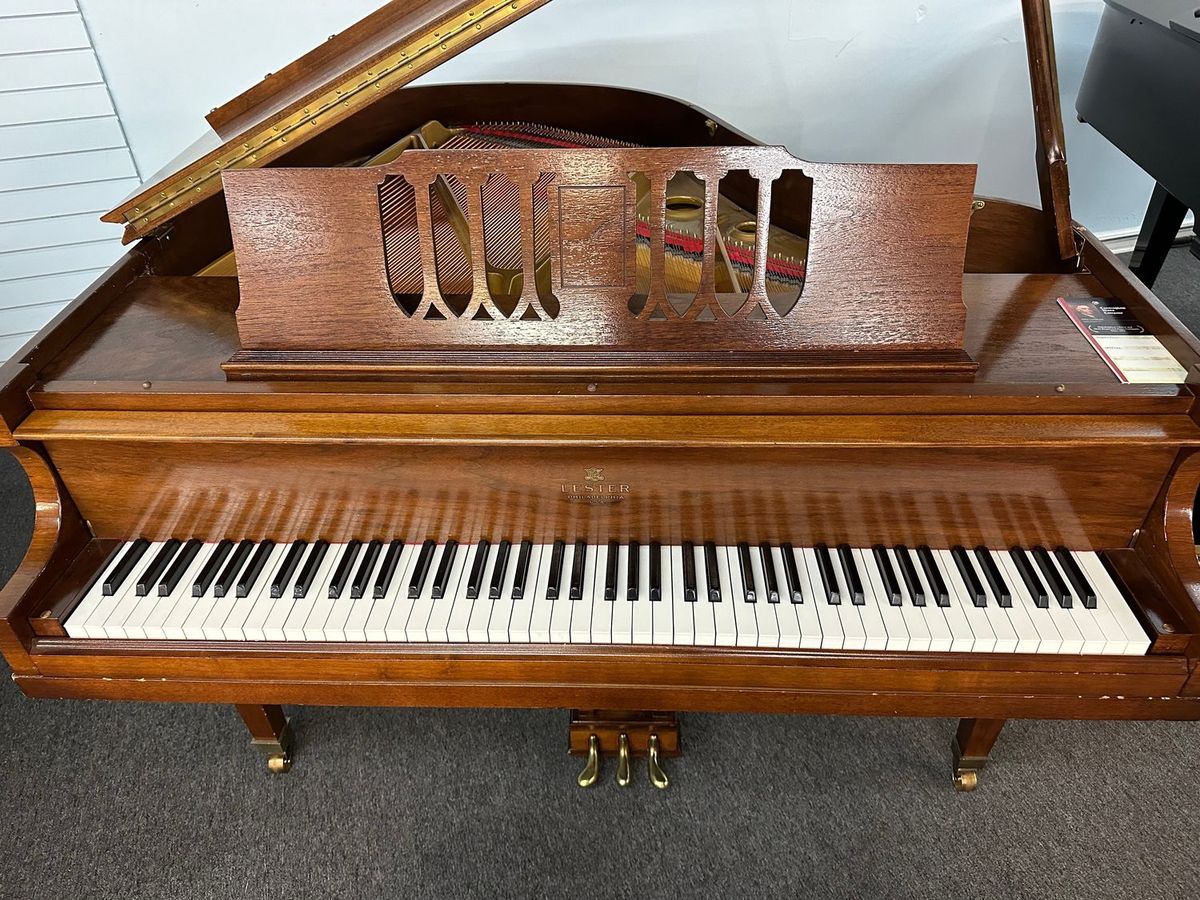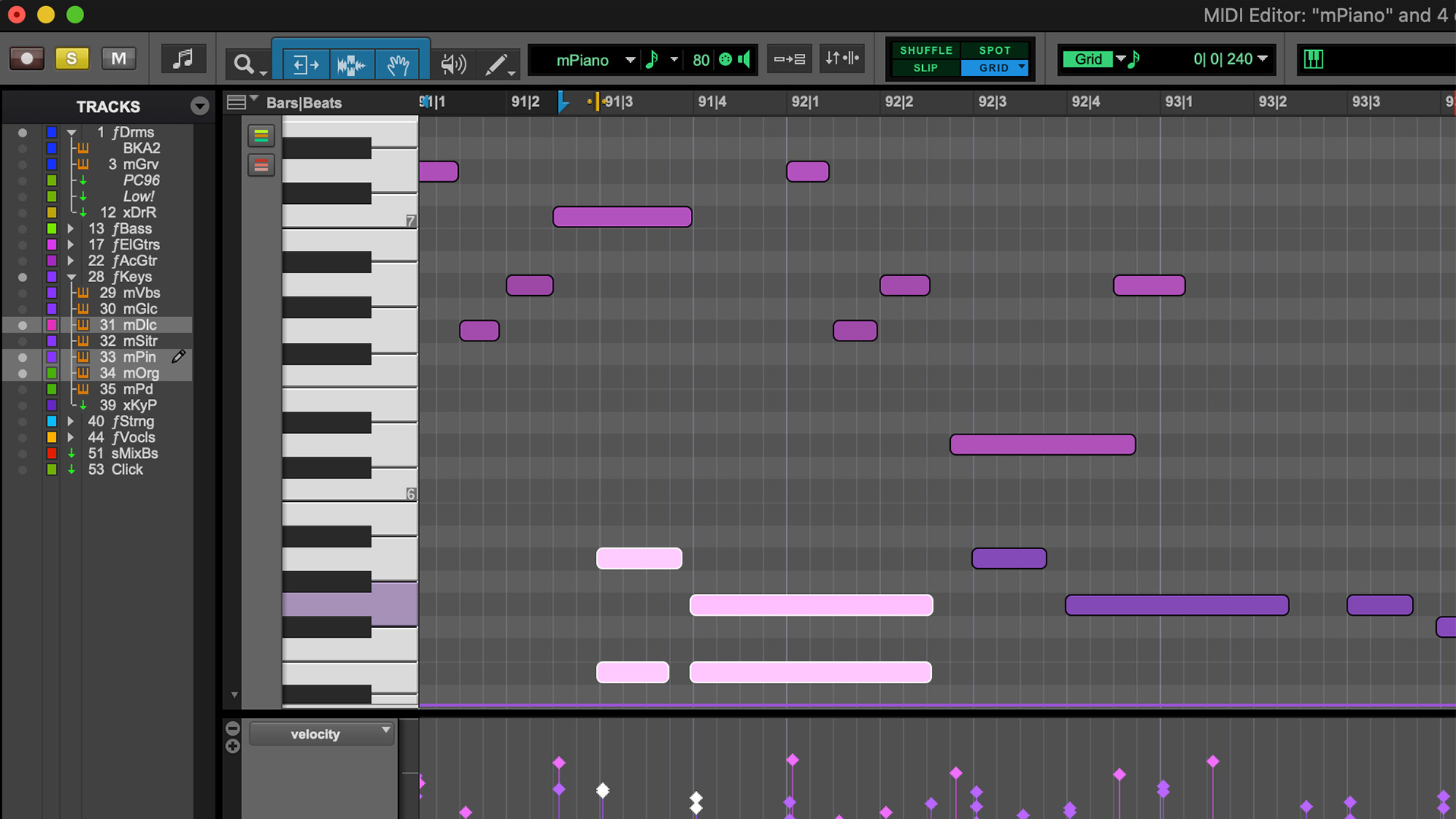Home>Instruments>Piano>How To Move A Baby Grand Piano


Piano
How To Move A Baby Grand Piano
Published: February 10, 2024
Learn the best techniques for moving a baby grand piano safely and efficiently. Get expert tips and advice for relocating your piano with ease.
(Many of the links in this article redirect to a specific reviewed product. Your purchase of these products through affiliate links helps to generate commission for AudioLover.com, at no extra cost. Learn more)
Table of Contents
Introduction
Moving a baby grand piano can be a daunting task, but with the right preparation and know-how, it can be accomplished safely and efficiently. Whether you're relocating to a new home or simply rearranging your living space, understanding the proper steps to move a baby grand piano is crucial to ensure its protection and the safety of those involved in the process.
In this comprehensive guide, we'll walk you through the essential steps to move a baby grand piano with confidence and precision. From gathering the necessary supplies to enlisting the help of capable assistants, each stage of the process plays a vital role in safeguarding the instrument and preventing potential injuries.
Moving a baby grand piano requires careful planning and execution, as these instruments are not only heavy but also delicate. By following the steps outlined in this guide, you can navigate the intricacies of relocating a baby grand piano and alleviate the stress often associated with such a significant undertaking.
So, roll up your sleeves, gather your supplies, and let's embark on this journey to ensure your baby grand piano reaches its new destination unscathed. With the right approach and attention to detail, you can successfully move your cherished instrument and continue to fill your home with the beautiful melodies it produces.
Step 1: Gather Necessary Supplies
Before embarking on the task of moving a baby grand piano, it’s crucial to gather all the necessary supplies to ensure a smooth and safe relocation process. Here’s a list of essential items you’ll need:
- Piano Dolly: A sturdy piano dolly designed specifically for moving pianos will provide the necessary support and mobility.
- Furniture Straps: Heavy-duty furniture straps will help secure the piano to the dolly and prevent it from shifting during transport.
- Piano Blanket: A thick, padded piano blanket will protect the delicate surface of the instrument from scratches and dings.
- Furniture Blankets: Additional furniture blankets can be used to cushion the surroundings and provide further protection during the move.
- Packing Tape: High-quality packing tape will be needed to secure the blankets and prevent them from slipping during the move.
- Tool Kit: A basic tool kit, including screwdrivers and wrenches, may be necessary to disassemble and reassemble any parts of the piano, such as the legs.
- Measuring Tape: A measuring tape will come in handy to ensure doorways and hallways are wide enough to accommodate the piano during the move.
- Protective Gloves: Sturdy, non-slip gloves will provide a better grip and protect your hands while handling the piano and its components.
- Assistance: Enlist the help of at least four strong individuals to assist with the lifting and maneuvering of the piano.
By ensuring you have all these supplies on hand, you’ll be well-equipped to tackle the challenges of moving a baby grand piano with the utmost care and attention to detail.
Step 2: Prepare the Piano
Before moving a baby grand piano, it’s essential to properly prepare the instrument to minimize the risk of damage during transport. Here are the key steps to prepare the piano:
- Remove the Music Rack: Start by carefully removing the music rack from the piano to prevent it from getting damaged or damaging other parts during the move.
- Secure the Lid: Close and secure the lid of the piano using a locking mechanism or heavy-duty straps to prevent it from unexpectedly opening during transport.
- Lock the Keyboard Lid: If your piano has a lid covering the keys, make sure it is securely locked to protect the keys and internal components.
- Secure the Pedals: Use soft padding or cloth to wrap and secure the pedals, ensuring they are protected and won’t cause any damage while the piano is being moved.
- Wrap the Piano: Carefully drape a padded piano blanket over the entire instrument, ensuring that it is securely in place and providing ample cushioning.
- Secure the Blanket: Use packing tape to secure the blanket around the piano, making sure it is snug and won’t shift during the move.
- Protect the Legs: If the piano has removable legs, carefully unscrew and remove them, ensuring they are wrapped and secured separately to prevent any damage.
By meticulously following these steps to prepare the piano, you can safeguard its delicate components and minimize the risk of damage during the relocation process. Taking the time to properly secure and protect the instrument will contribute to a successful and stress-free move.
Step 3: Enlist Help
Enlisting the right assistance is crucial when it comes to moving a baby grand piano. The weight and size of the instrument make it a challenging task that requires multiple pairs of hands and careful coordination. Here’s how to ensure you have the necessary help:
- Recruit Strong and Capable Individuals: Reach out to friends, family members, or colleagues who are physically capable of lifting heavy objects. Ideally, you’ll need at least four individuals to assist with the move.
- Communicate Clearly: Clearly communicate the plan and expectations to your helpers. Ensure everyone understands their roles and the precautions that need to be taken to protect both the piano and themselves.
- Coordinate the Timing: Set a specific date and time for the move and ensure that all helpers are available and committed to the task. Having a well-coordinated team is essential for a smooth and efficient relocation.
- Express Gratitude: Show appreciation for the assistance provided by your team. Moving a piano is no small feat, and expressing gratitude for their help will foster a positive atmosphere and a sense of camaraderie.
By enlisting the right help and ensuring effective communication and coordination, you can tackle the challenge of moving a baby grand piano with confidence and efficiency. Remember, teamwork is key to a successful and safe relocation process.
Step 4: Move the Piano
Moving a baby grand piano requires a methodical approach and careful execution to ensure the safety of the instrument and those involved in the process. Follow these essential steps to move the piano with precision and care:
- Position the Piano Dolly: Place the piano dolly next to the piano and ensure it is stable and properly positioned to receive the instrument.
- Lift the Piano Onto the Dolly: With the assistance of your team, carefully lift the piano onto the dolly, ensuring that it is balanced and secure.
- Secure the Piano to the Dolly: Use heavy-duty furniture straps to secure the piano to the dolly, preventing any movement or shifting during transport.
- Maneuver the Piano: With the piano securely strapped to the dolly, carefully maneuver it through doorways and hallways, ensuring a clear path and taking caution with any tight spaces or obstacles.
- Load the Piano onto the Moving Vehicle: Safely guide the piano onto the moving vehicle, ensuring that it is properly secured and positioned to prevent any jostling or tipping during transit.
- Drive with Caution: If you are transporting the piano yourself, drive with caution, taking into account the delicate cargo you are carrying. If using professional movers, ensure that they are experienced in handling pianos and understand the necessary precautions.
By methodically following these steps and exercising caution throughout the process, you can successfully move a baby grand piano to its new location without compromising its integrity or risking injury to those involved.
Step 5: Set Up the Piano
Once the baby grand piano has been safely transported to its new location, the final step involves setting it up in its designated space. Proper setup is essential to ensure the piano is stable, secure, and ready to be played. Follow these crucial steps to set up the piano:
- Positioning the Piano: Carefully maneuver the piano to its designated location, ensuring that it is positioned away from direct sunlight, drafts, and sources of moisture or extreme temperature changes.
- Unloading the Piano: If professional movers are involved, supervise the unloading process to ensure the piano is handled with care and placed gently in its new space.
- Remove the Blankets and Straps: Carefully remove the protective blankets and straps from the piano, taking care not to scratch or damage the instrument during this process.
- Reassemble the Legs: If the piano’s legs were removed for transport, carefully reattach and secure them, ensuring they are stable and level on the floor.
- Tune the Piano: After the piano has been repositioned and allowed to acclimate to its new environment, consider having a professional piano tuner adjust and tune the instrument to ensure optimal sound quality.
- Enjoy Your Piano: Once the piano is set up and tuned, take a moment to appreciate the beauty of your instrument in its new home. Play a few notes and revel in the joy of having successfully relocated your baby grand piano.
By meticulously following these steps to set up the piano, you can ensure that it is ready to be enjoyed and played in its new environment. Taking the time to position, unpackage, and reassemble the piano properly will contribute to its longevity and the quality of the music it produces.
Conclusion
Moving a baby grand piano is a significant undertaking that requires careful planning, the right supplies, and a dedicated team to ensure a successful and safe relocation. By following the comprehensive steps outlined in this guide, you can navigate the complexities of moving a baby grand piano with confidence and precision.
From gathering the necessary supplies to preparing, moving, and setting up the piano in its new space, each stage of the process plays a vital role in safeguarding the instrument and ensuring a smooth transition. Remember, the key to a successful move lies in meticulous preparation, effective communication with your team, and a cautious approach to handling the delicate instrument.
As you embark on the journey of moving your baby grand piano, take the time to appreciate the beauty and craftsmanship of this remarkable instrument. Whether it’s the centerpiece of your living room or a cherished part of your musical repertoire, the baby grand piano holds a special place in many hearts, and its safe relocation is paramount to preserving its value and functionality.
So, roll up your sleeves, gather your supplies, and enlist the help of capable individuals to embark on this rewarding endeavor. With the right approach and attention to detail, you can successfully move your cherished baby grand piano and continue to fill your home with the beautiful melodies it produces.
By following the steps outlined in this guide, you can navigate the intricacies of relocating a baby grand piano and alleviate the stress often associated with such a significant undertaking. With the right preparation and execution, your baby grand piano can reach its new destination unscathed, ready to fill your home with its timeless music once again.











